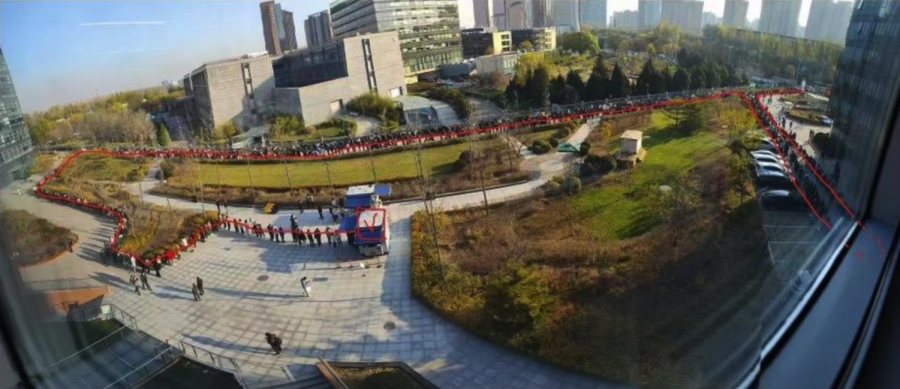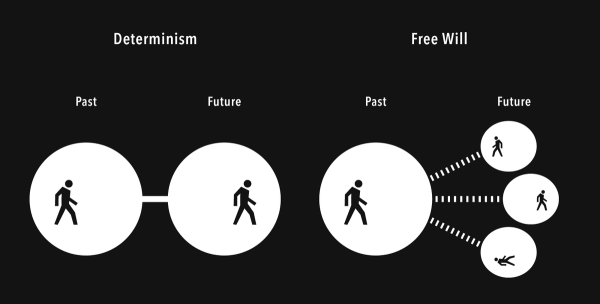China, Human Rights, and the World
Ahead of an international meeting in Bali, Indonesia, President Biden and President Xi Jinping of China met privately to discuss several issues, including China’s human rights record. The White House stated in a meeting summary that a US official would continue the conversation during a future visit to China.
I don’t know what the two men said. I don’t know how President Biden handled the issue of human rights and how he chose to address it. I don’t know how in-depth he decided to go; I don’t know how in-depth he felt it was safe to go.
I do know that my parents’ friends in China, lawyers and human rights activists, have been explicitly warned against taking up certain cases. I do know that cities have been locked down for months while their citizens slowly starve. I do know that whenever public opinion seems to run contrary to the government’s agenda, its voice is quickly strangled.
I’m sure you’re aware of the systematic genocide against Uyghur Muslims. However, thisbarely scratches the surface of the Chinese Communist government’s atrocities. Recently, it has begun more openly silencing its own citizens with a new method: a zero-COVID policy. The policy refers to a wide variety of laws, all theoretically implemented to combat COVID but in practice used to stifle the people. One law is that everyone must take COVID tests frequently, sometimes daily, and show proof of a negative result to even leave their homes. This limits citizens’ movements, especially because COVID tests are often not easily accessible.
Tracking apps are installed on people’s phones, officially to track COVID close contacts but unofficially used to monitor everyone’s movements. If someone in an apartment building is told they tested positive, they’re not always allowed to see the test and confirm it for themselves. Worse, the residents of the entire building can be deemed “close contacts,” loaded onto buses in the middle of the night, and packed away for an unknown amount of time to half-finished “quarantine centers.”
The centers often lack food, privacy, showers, and sufficient space for the thousands of people crammed inside. They’re also badly-organized: close contacts can be put in the same area as people who have tested positive. The centers look like jails, and some residents have gone as far as to call them “concentration camps.” Occupants have to receive permission to go outside, and the property is ringed with fences. Militaristic police cars are stationed at intervals, reminding people that there is no escape. In just one month, 20,000 people were relocated to various centers.
These restrictions are the government loosening up. A few months ago, they could and did lock down entire cities “so COVID couldn’t spread” without even considering the logistics needed to keep everyone alive. Shanghai, with a population of 26 million and arguably China’s most highly-developed city, was locked down for two months. Residents were starving to death. It wasn’t just low-income people, it was everyone: you can’t eat money, after all, and it doesn’t matter how much money you’re willing to spend when there’s nothing to buy. In China’s towering apartment buildings, many grew desperate enough to seek quicker deaths.
Shanghai was once considered China’s glittering ceiling, the epitome of what every city should be. Online, people said that it was now the muddy floor.
Their posts were deleted in a matter of hours.
When I googled “China zero-COVID policy,” none of this information about lockdowns or quarantines popped up. The entire front page was filled with articles on the policy’s economic harms or its damage to China’s financial markets. The lone outlier was a story headlined “Death of Boy in Lockdown Fuels Backlash,” and it was only included as a subset of another article.
The boy in question was three-years-old and showed symptoms of gas poisoning. The compound where he lived had been locked down, and when his father attempted to take him to a hospital, government officials demanded proof of a negative COVID test before they would even consider allowing them to leave. No tests had been available for ten days, and the father had nothing to show. The officials refused to grant an exception to the lockdown, and by the time the boy got to the hospital, it was too late.
In another instance, a woman’s infant son began running a high fever. But officials bolted her door shut from the outside, trapping her in and denying her access to medical care. Desperate, the mother twisted a rope of bedsheets, tied her son to herself, and began lowering them both out the window. They made it down two or three stories before the rope broke. Their apartment was on the twentieth floor.
I could, quite literally, continue listing out heart-wrenching tragedies for pages upon pages. All these people were victims of a cruel government’s latest attempt to seize power, and even worse, the government hasn’t been unsuccessful. It’s managed to build a narrative of a glorious, advanced China, and any evidence to the contrary is quickly erased by a vast censorship machine.
A prime example is the chained woman. She was discovered by a blogger in a remote village, chained to a wall with a collar around her neck. Her husband provided a marriage certificate with a photo of a woman who looked extremely different. Eight children claimed her as their mother, seven of them boys―extremely rare if it happened naturally, but in a culture where sons are seen as good luck, I’d be astounded if no female infanticide occurred.
The government published three separate stories, several days apart, all directly contradictory. First, they said the marriage was legitimate and there was no evidence of abuse. Then they claimed the woman was mentally ill and needed to be chained for her own safety. (Social media users quickly pointed out that if she was mentally ill, she wouldn’t have been able to consent to marriage or childbearing.) Finally, the government arrested the husband for abuse and fired a few local government officials. There were no mentions of rape; marital rape isn’t even a crime under Chinese law! In response, the Chinese Internet exploded. Amateur detectives searching for evidence dug up increasingly horrifying information not only about the woman, but about the rampant practice of bride human-trafficking that the government turns a blind eye to. Citizen journalists traveled across the country to interview witnesses, culminating in two female volunteers being beaten up and “disappeared.”
Finally, the government had enough. Overnight, all mention of the chained woman was scrubbed off the Chinese Internet, and any new posts were deleted within minutes. Some users found their accounts suspended for trying to discuss it, while others received calls from the police. The woman disappeared; she might as well have never existed.
At the same time the government was erasing her story, they were preening in the international spotlight of the 2022 Beijing Winter Olympics. And now, while my aunt is afraid to tell anyone she has family in the US, American companies are pumping nearly $400 billion into China’s economy. While my twelve-year-old cousin is learning in school that America is the enemy, President Biden is holding civil conversations with President Xi. While my grandfather carefully monitors everything he says both online and in-person, 54 overseas Communist police stations have been allowed to open in various countries, where they threaten Chinese political dissenters into returning to China.
I know things are sensitive; I know things are dangerous. But if the world keeps tacitly condoning these atrocities, nothing will ever get better.
Sources/Further Reading
Bali talk with President Biden and President Xi
Zero-COVID Policy
Zero-COVID policy from an on-the-ground journalist
Video of crowded sleeping quarters in a quarantine center
Video of a corridor of living arrangements in another quarantine center
New York Times compilation of videos
New York Times overview of Shanghai lockdown
One person’s experience in a Shanghai quarantine center
Quarantine camps; 20,000 people relocated
Citizens fighting against propaganda
New York Times opinion on why China won’t change
Chained Woman
The Olympics and the chained woman
Overseas Police Stations
Chinese overseas police stations
New York City overseas police station
Chinese private detectives spying on dissidents
Other
Grade: 10
Years on Staff: 0
Why are you writing for the Flintridge Press?
I'm writing for the Press because I want to discuss less well-known...







